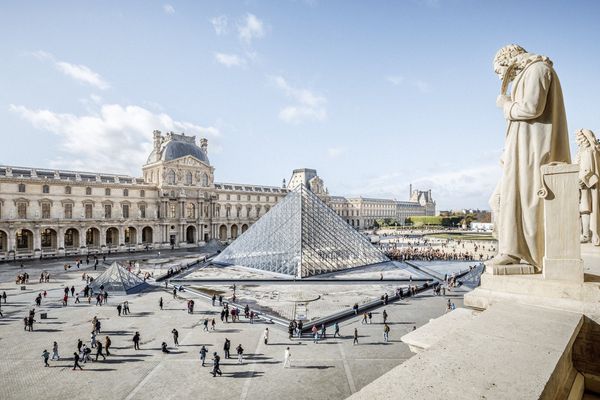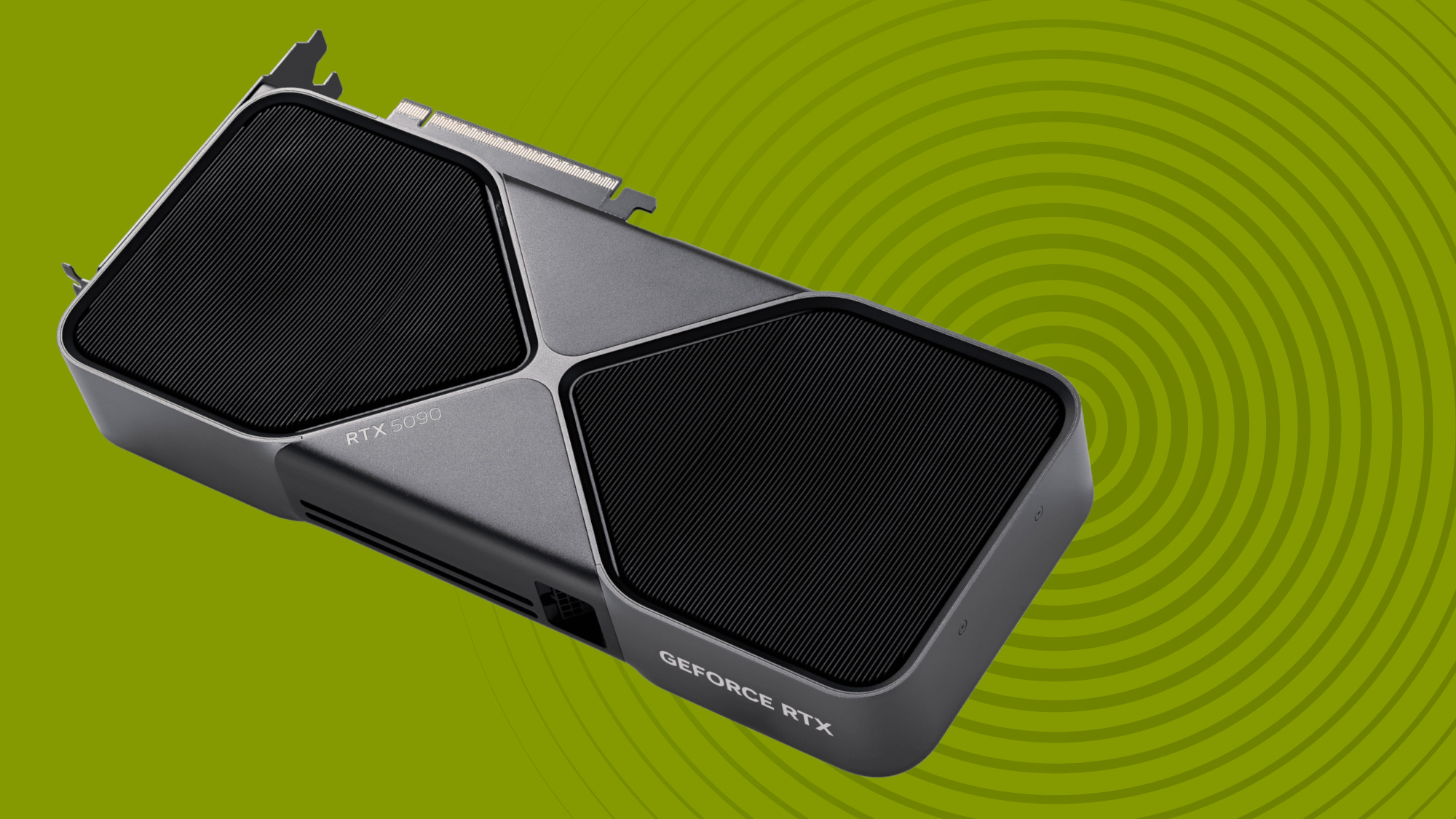
Launch day for Nvidia's GeForce RTX 5090 GPU has finally arrived, and it's going to be a fierce battle for stock between PC gamers, creative professionals, and (of course...) an army of scalpers and bots.
We scored Nvidia's latest flagship GPU a hearty four and a half stars in our RTX 5090 review, calling it 'the supercar of graphics cards' and praising its stellar performance and design. 8K gaming is finally on the menu, even without AI-powered upscaling tech - though Nvidia's DLSS 4 and Multi Frame Generation features are nothing to sniff at, either.
Unfortunately, all that makes it a highly desired GPU. Retailing at $1,999 / £1,939 / AU$4,039 for the Founders Edition card, the RTX 5090 costs a pretty penny - but if you've got the dough, TechRadar is here to help you snap one up.
The RTX 5090 is expected go on sale at 9AM ET / 6AM PST / 2PM GMT on January 30 - but bear in mind that every seller will have limited stock (if previous RTX launches are any indication) so securing one might be challenging. Regardless, we'll keep updating this page regularly to help you track down this coveted GPU.
WHERE TO BUY RTX 5090: US QUICK LINKS
- Nvidia: Buy direct from Nvidia (including Founders Edition and third-party GPUs)
- Amazon US: Major retailer will hopefully have stock of third party RTX 5090 GPUs
- Best Buy: Nvidia RTX 5090 Founders Edition will be on sale
- Newegg: Founders Edition and third-party RTX 5090s go on sale soon
- B&H: Preorders start at 9am ET, Friday January 30
- Micro Center: Retailer will have stock from Nvidia and third parties
- Adorama: Worth checking for stock when sales go live
- CCL: Stock notification sign-ups live now
WHERE TO BUY RTX 5090: UK QUICK LINKS
- Nvidia UK: Buy Founders Edition and third-party GPUs direct
- Amazon: Should have RTX 5090 models on sale
- Ebuyer: Already lists RTX 5090 models ahead of launch
- Scan: Get notified when RTX 5090 GPUs go on sale
- Overclockers: Respected retailer should have stock on launch day
- Box: Another well-known store for PC components should have RTX 5090 stock
WHERE TO BUY RTX 5090 IN THE US
Orders for the Nvidia RTX 5090 will go live in the US on January 30, but stock is in high demand with retailers expected to sell out. We're not seeing any pre-orders popping up yet, but we'll keep you posted if that changes. Below, you can find all the retailers we recommend checking out:
WHERE TO BUY RTX 5090 IN THE UK
The Nvidia RTX 5090 will go on sale in the UK on January 30 as well, though stock is likely to be limited there too. Here are the retailers we recommend keeping an eye on:
- These are the best graphics cards of 2025

Here we go again, folks... Nvidia is about to drop its new next-gen flagship graphics card, the RTX 5090 (as well as its little brother the RTX 5080), and you can bet that hordes of gamers - and scalpers - will be chomping at the bit to get their hands on one.
As someone who's currently got an RTX 4080 sitting inside my home PC, I'm feeling rather comfortable this time around - not beset with the urgent need to upgrade that I felt during the last big Nvidia launch. But that doesn't mean I'm not here to help you out: with the January 30 release date closing in and the review embargo lifting today, January 23, I'll be here for the next few weeks to keep tabs on stock and (hopefully!) point you in the right direction.
You'll be able to check out our review later today, but right here I've compiled all the retailers you'll want to keep an eye on when it comes to tracking down one of these highly-coveted GPUs. Some storefronts, such as Newegg, already have dedicated landing pages for the RTX 5090, but nowhere seems to be offering any sort of pre-orders yet - it's possible they won't at all. However, some retailers - including Nvidia itself - are allowing shoppers to sign up for email notifications.
Be sure to bookmark this page and check back for more updates - I'll be keeping a close watch on retailers for any updates as stock shifts, so you can be the first to know.
Although you'll still have to wait a few hours until we're allowed to publish our review - we really don't want to hear from Nvidia's legal team today! - you can check out our RTX 5090 unboxing right now to get an early sneak peek at the contents of the package.
A new type of power adapter is now included in the box, making it easier to install the GPU inside smaller PC cases and hopefully putting to bed any previous thorny issues with melting power connectors...
There have been rumors about RTX 5000 stock shortages circling for the past few days, but even if they prove to be untrue, I strongly suspect that we're going to see an absolute sell-out almost immediately on launch day. With no pre-orders in sight to secure you a unit in advance, your best bet is likely going to be camping on multiple retailer sites (which I've handily organized for you above).
The scalpers are likely to be out in force again for this launch, even now that crypto-mining isn't as widespread and prevalent as it was during previous GPU releases. The RTX 4090 never really got over its stock issues, with units still selling above MSRP on sites like Amazon. However, that was arguably down to how much of a letdown the RTX 4080 was - hopefully this time around, Nvidia will get things right with its new not-quite-flagship GPU.
Fun fact: the RTX 5090 is going to be quite a bit smaller than its predecessor the RTX 4090, despite ostensibly being a more powerful card. Yes, I have to say 'ostensibly' because we're not past the review embargo yet, but come on, we all know it's going to perform better.
I'm personally over the moon that Nvidia has opted to slim things down for this new high-end GPU, because quite frankly the RTX 4090 was a comically oversized beast of a card regardless of which model you bought. All of the Founders Edition models of every upcoming RTX 5000 card will be certified for Nvidia's own Small Form Factor Ready scheme, meaning lovers of compact PCs and living-room builds can rejoice.
If you've somehow stumbled onto the wrong page and were actually looking for Nvidia's more affordable (but still definitively high-end) new GPU, you can check out our where to buy the RTX 5080 guide instead. I'll be making sure both pages stay updated regularly up to launch day and beyond to help you track down stock, and it's worth bearing in mind that the RTX 5080 might be a little easy to get hold of than the flagship 5090 - so if you're desperate for shiny new graphics card, that could be a better bet.
The new, sleeker RTX 5000 design reportedly almost didn't happen: earlier this week, we spotted a mysterious possible RTX 5090 prototype that was a seriously beefy boy, packing specs beyond the real 5090 and a truly absurd 800W power requirement.
While that prototype remains shrouded in uncertainty, it's possible that it might rear its head further down the line if Nvidia chooses to resurrect its long-dormant Titan RTX series for professional users.
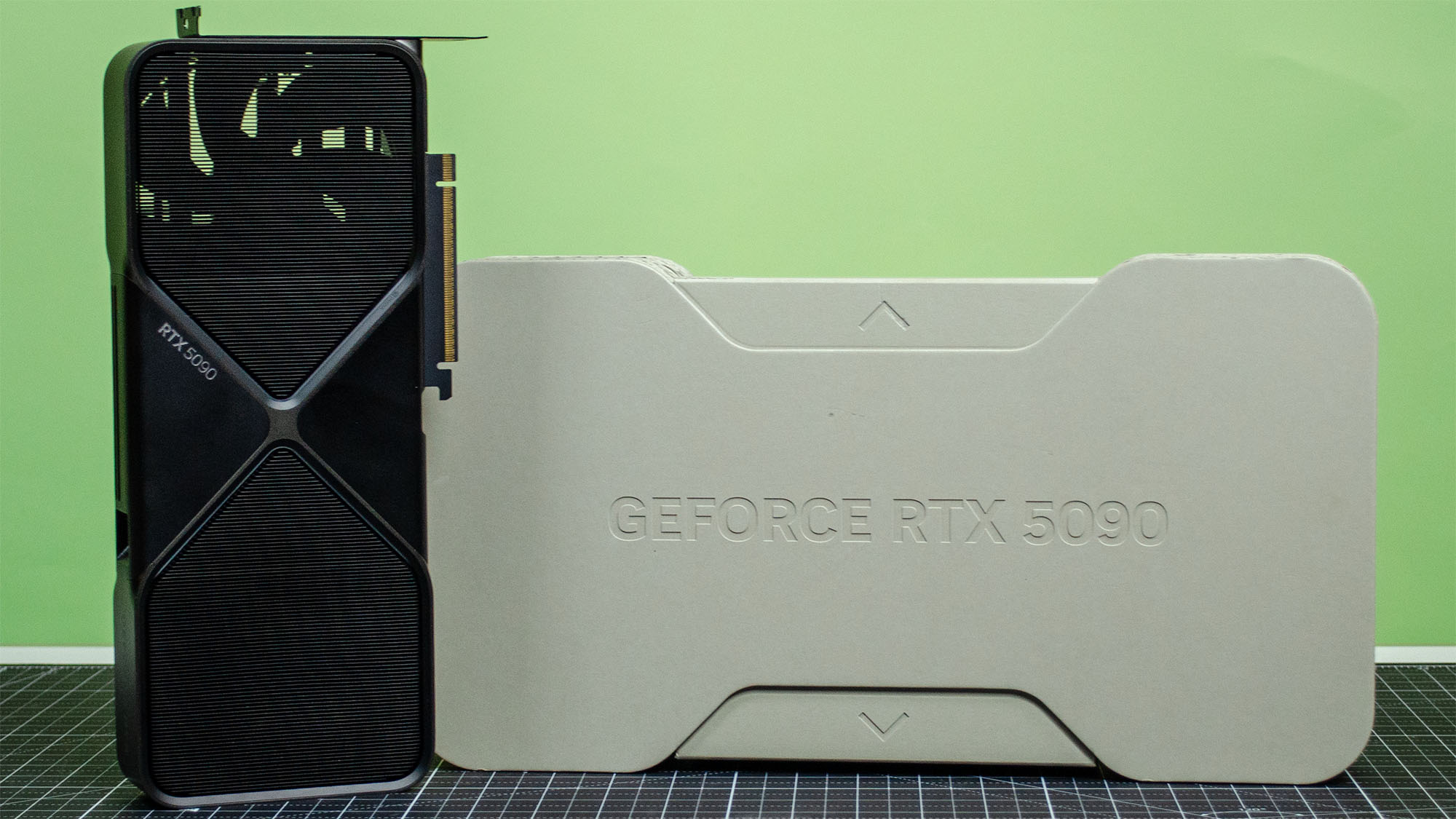
Our Nvidia GeForce RTX 5090 review is now live! Our components editor, John Loeffler, gave it 4.5 stars, calling it "the supercar of graphics cards". He did knock it a bit for its "obscene" power consumption, which exceeded 550W in his testing, but praised its redesigned cooling and slimmer form factor.
Overall, it's a major step up from the RTX 4090 in terms of performance, even without factoring in DLSS 4, so once that upscaling tech rolls out on launch day, you can expect even better performance.
Some of you might be sitting there wondering about DLSS 4 and its fancy new Multi Frame Generation tech (the latter of which will be exclusive to RTX 5000 GPUs). The viability of DLSS and other upscaling tools of its ilk has been hotly contested by some sectors of the PC gaming community, some of whom claim that it's become a crutch - an excuse for Nvidia to dial back generational hardware improvements and for game developers to cheap out on PC optimization.
But if recently released usage data is accurate (and there's frankly no reason to believe it's not), it looks like DLSS is here to stay. Thankfully, the new DLSS 4 will be backward compatible with all RTX GPUs back to the 2000 generation - unlike DLSS 3, which was locked to RTX 4000 cards exclusively.
If you're currently rocking an RTX 3000 GPU in your rig and have been contemplating an upgrade once the next-gen cards drop (well, why else would you be here?) - you might want to know that Nvidia is potentially planning some retroactive upgrades to your GPU.
Nvidia VP Bryan Catanzaro recently suggested that it might be possible to bring Frame Generation to RTX 3000 cards, as the new version of Team Green's frame-gen tech doesn't rely on the Optical Flow hardware accelerator that enabled the tool in the RTX 4000 generation. Instead, it uses an AI-based solution, something that RTX 3000 cards - with their AI-capable Tensor Cores - could potentially utilize. In order words, that cutting-edge technology might soon be available for users with older GPUs, potentially nixing the need for an immediate upgrade.
The real question for any shoppers out there is whether or not they should spring for the RTX 5090, or its little sibling the RTX 5080 - after all, the 5080 is quite literally half the price of the 5090 at $999 / £979 compared to the 5090's $1,999 / £1,939 price tag.
Although we haven't quite finished our testing with the cheaper (imagine me doing air quotes around that particular word) GPU, it's fair to say that the 5080 won't offer a pure half of the performance available on the 5090, especially once DLSS 4 and Multi Frame Generation are factored in. Of course, the RTX 5090 will likely be the more future-proofed choice, and it does carry with it certain bragging rights...
When it comes to availability, I've done my best to provide a breakdown of the key retailers to watch out for higher up in this article, but be aware that stock is extremely likely to all but evaporate on launch day. Some sites, including Best Buy, Scan, and Nvidia's own site are offering a 'Notify Me' feature which can alert you via email or text message when stock drops on January 30.
It's worth bearing in mind, however, that Nvidia's own site will often redirect shoppers to other retailers, especially if you're looking to buy a third-party version of the RTX 5090, so it's a good idea to keep tabs on actual seller sites instead.
With our Nvidia RTX 5090 review live and its benches marked, we finally have some numbers to share with the more quantitatively inclined. The graphs below show how the new RTX 5090 stacks up against cards like the RTX 4090 and 4080, as well as the RX 7900 XTX and 7900XT on AMD's side.
Yes, there's a boost where DLSS is considered; but there's also a markable upgrade over the previous generation without upscaling in the frame. As per our 5090 review, "With ray tracing and no upscaling, the difference is even more pronounced with the RTX 5090 getting just over 34% faster average framerates compared to the RTX 4090 (with a more modest 7% faster average minimum/1% fps)."
These are some exciting performance bumps, and I have a feeling the 5000 series will fly off the shelves particularly quickly.
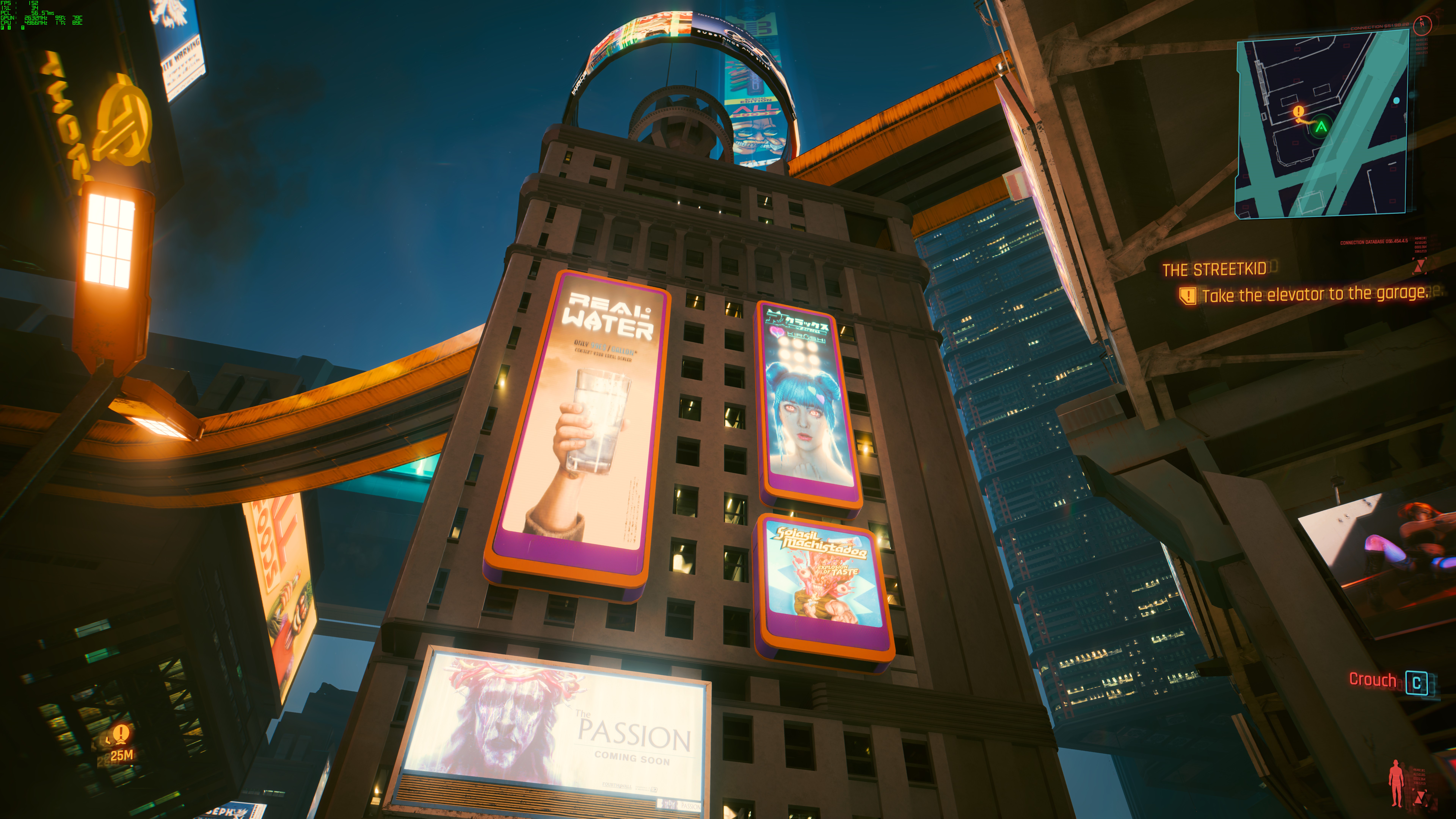
The RTX 5090 is the first graphics card on the market to feature GDDR7 video memory (32GB of it at that), and when combined with the improvements to DLSS, as well as Tensor and Ray Tracing Cores, it's positioned as the first GPU viable of capably running games at 8K resolution.
Our Managing Editor, Core Tech Matt Hanson took the 5090 for a spin in graphically-demanding titles like Cyberpunk 2077, Hogwarts Legacy, and Star Wars: Outlaws to test exactly this, and the results are pretty amazing. The 5090 was able to handle Cyberpunk 2077 at 8K (7,680 x 4,320) resolution, with graphics set to RT Over Drive (essentially the highest they can go), at 148.89 frames per second.
If you haven't already checked out Newegg's RTX 5090 stock, do give it a look. It's running an interesting deal on GPU trade-ins right now, meaning you can clean out your old GPU and upgrade to the 5090 in one go.
Just for fun to see how much I'd get, I plugged my GeForce RTX 3080 Ti Gaming X Trio 12G in and found Newegg would pay me $419 towards a new graphics card. That's a 20% discount on the 5090'x $1,999 price tag - not bad at all.
I found it interesting to check Steam's Hardware Survey and see that of all participating players in December 2024, 19.56% game at 1440p on their main monitor.
2K is the sweet spot between visual fidelity and performance strain, so it makes sense that a sizable chunk of Steam players hang out at this resolution. The 5090 absolutely crushes most titles at 1440p and high settings, though it does underperform compared to some of its predecessors in certain situations.
We're now just six days away from launch, and with reviews now out in the wild (including our own RTX 5090 review), we're starting to get a firmer picture of just how desired this GPU will be.
As just about anyone with their finger on the pulse of the graphics market could tell you, these reviews are largely positive, with most negative feedback centering around the 5090's gluttonous power use and - of course - the sky-high pricing. However, at this point, Nvidia is confident in the identity of its flagship GPU as a card focused purely on enthusiasts and professionals, at which point pricing becomes a bit moot. If you seriously want to buy a 5090, you've likely got the cash and a powerful rig to support it.
Another flagship GPU, another opportunity for my lovely boss (the inimitable Matt Hanson) to dive into some ridiculous 8K gaming goodness.
If the RTX 4090 was the first consumer GPU to truly enable 8K gaming, the RTX 5090 is the one that could finally take it mainstream - in large part due to DLSS 4 and the new Multi Frame Generation feature. In Matt's testing, he found that the 5090 consistently matched or beat the 4090 while the latter was using frame-gen and the former wasn't. Turn on Multi Frame Generation, and the 5090 absolutely zooms ahead; it cracks high framerates across multiple games despite the 8K resolution and Ultra graphics presets. Truly magical stuff.
While our live updates are geared towards shoppers in the US and UK, I'm going to drop some shopping advice for any eager shoppers dropping in from other English-speaking nations.
Shoppers in Canada are liable to have a hard time picking up an RTX 5000 series card next week, but the best places to look will likely be the Canadian storefronts of Newegg and Best Buy. Walmart may also be worth a look, but it's not currently showing any listings for new GPUs. Nvidia's own website helpfully (read: unhelpfully) redirects Canadian users to the US page about the RTX 5000 series, and it's unclear whether the 'Notify Me' system will work for users in Canada - I'm using a VPN to access these sites right now.
Meanwhile, any Australians looking to pick up an RTX 5090 are likely to struggle if previous launches are anything to go off: stock is often even more limited in Australia than it is in the US and UK.
Right now, major retailers like JB Hi-Fi and Dick Smith don't appear to have any RTX 5000 cards listed at all, but BPCTech and MWave both have listings and you can sign up for notifications when stock becomes available. Some shoppers may be considering a pre-built system: in that case, you should take a look at EvaTech's RTX 5000 custom PC page - which, amusingly, contains a stern warning about highly limited day-one stock and a one-per-customer order limit.
Now, anyone looking to buy an RTX 5090 would do well to remember that this absolute monster of a GPU comes with a potential pitfall: to put it simply, the rest of your system will really need to keep up if you want to squeeze the best performance out of the 5090.
For starters, the insane 575W TDP means you're going to want a hefty PSU, probably a 1000W model at a minimum. Alongside this, you'll need a high-end CPU (likely a Ryzen 9 X3D chip for gaming, or a top-of-the-line Intel Ultra 9 for creative/AI workloads) and plenty of RAM to avoid any system bottlenecks.
That high TDP also means that this card runs hot, even though the fans aren't too noisy and do a decent job of keeping the GPU itself cool. It'll pump out heat when running at capacity, so you're going to want to make sure you've got a case with strong ventilation. And of course, you'll also need a 4K or even an 8K display.
In terms of generational improvements, the RTX 5090 represents a significant uptick in performance over the current-gen RTX 4090 - and that's before even factoring in new features like Nvidia's Multi Frame Generation (MFG) mode.
During his in-depth testing, our Components Editor John Loeffler concluded that the RTX 5090 can get you up to 50% better performance than the 4090, without using any frame-gen tech. Bring MFG into the equation and game framerates skyrocket - although of course, there are some downsides to features like frame-gen and DLSS.
Regardless of which RTX 5000 GPU you opt for, it seems clear that Nvidia is setting its sights on the future - RTX 4000 stock is expected to dwindle rapidly once the new cards are out in the wild, so you'll need to act quickly if you have any designs on snapping up one of those current-gen cards.
This isn't unusual; Nvidia and its third-party GPU partners move pretty fast, meaning we'll be fully into a new cycle of hardware once the RTX 5070 and 5070 Ti launch in February. As for more affordable RTX 5000 desktop GPUs, well, there's no news on that so far...
Since the RTX 5090 FE underwent a fairly major redesign from the previous generation, there's one big change that might irritate some users: the power connector.
Basically, Nvidia has moved the connector port's position on the card to make it easier to close your PC case's side panel. However, the new connector is at an angle in a recessed slot on one of the edges of the card, which means right-angled cable connectors - like the ones many PC builders may have purchased to help with cable management inside their cases - will no longer fit. It's a minor gripe, but one that has the potential to frustrate some users.
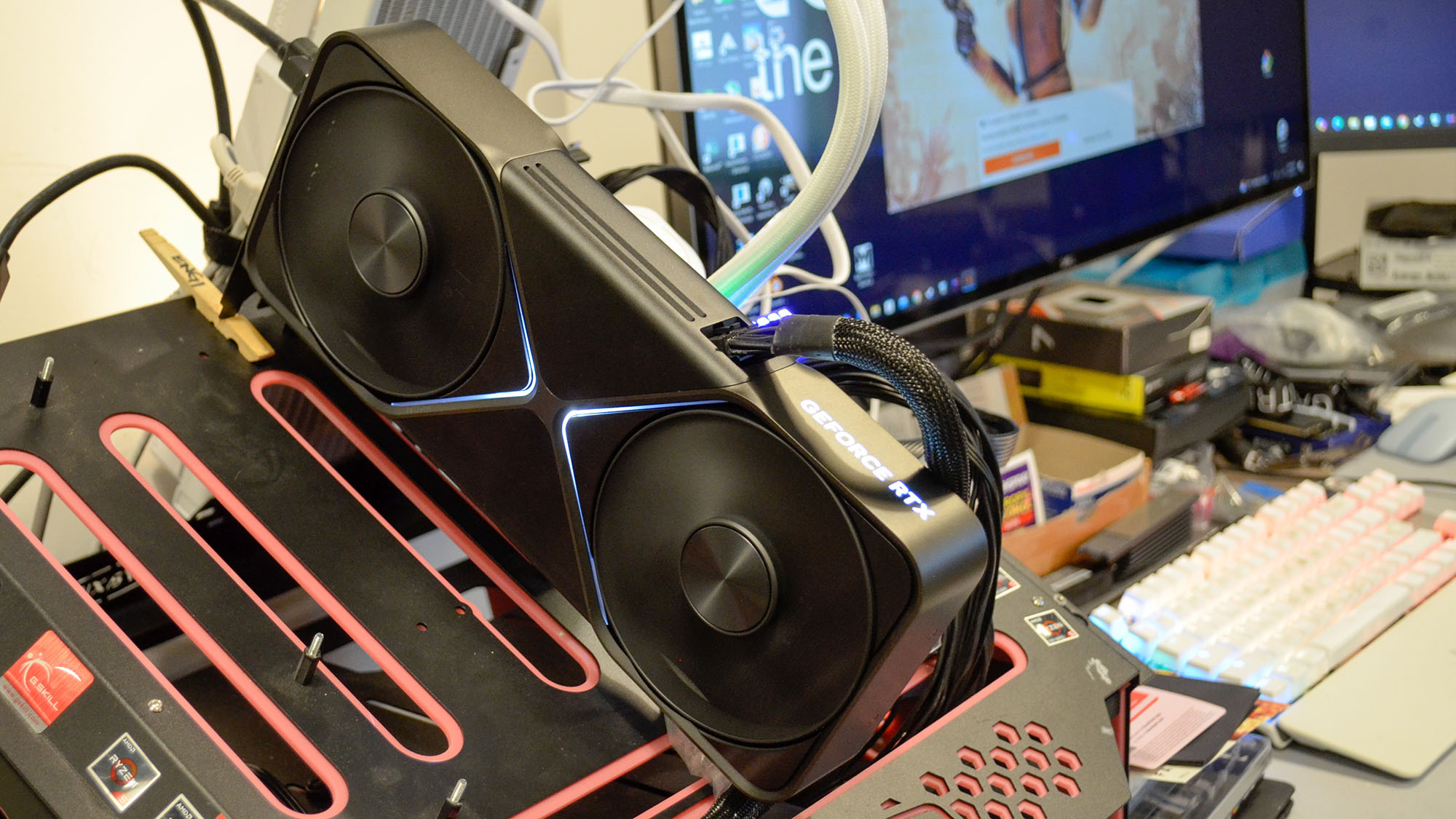
Hey folks, John Loeffler here, taking over for Christian for a bit as we talk more about the RTX 5090.
I spent a lot of time with the RTX 5090 over the last two weeks, and generally, I found it to be a very impressive card overall, even before really factoring in any of the AI stuff and DLSS 4 performance.
That said, there were some hiccups that were apparent during testing, which I mostly put down to the review driver I was using to test certain games like Cyberpunk 2077 or certain benchmarks like 3DMark Night Raid.
Once official drivers launch with the RTX 5090 next week and get further updates, a lot of these issues (such as the RTX 4090 beating the RTX 5090 straight 1440p performance or coming out ahead in Night Raid) will likely get ironed out. The current game version of popular PC titles often aren't going to perfectly line up with prerelease hardware, especially as driver and game devs work long hours to make last-minute changes to the software before they eventually get them to me, after which you better believe I'm just going to run with what they gave me and not really look back.
It's a bit of a peak behind the curtain, but if I spend a whole day testing a GPU and gathering data for a review that's due to publish in five days, and you come to me three days later and say that a new driver update on a press portal fixes something that gives an extra 2-3% performance on a few games or benchmark tools, using that updated driver to run those tests would mean having to retest everything in my testing suite.
Just because that update fixes one thing doesn't mean it won't break something else, so I have to be sure and consistent, and often, I've found that doing so doesn't fundamentally change the overall picture of the card at launch. Only time and dedicated development work will do that, and that's not something you can get when crunched up against a deadline.
But that also means that the data I collect during testing is never the final word. Driver updates over time can greatly improve performance (just ask Intel's graphics team post-Arc Alchemist launch), so take everything I list in my review as a starting point, and understand that updates and refinements will lead to even bigger performance gains down the road for the RTX 5090. In the end, it's why I'm constantly testing and retesting these GPUs for these reviews, because I want to make sure I'm capturing as close to the level of performance you're going to
Though I make it a point in my review that the RTX 5090 is possibly the first real 8K graphics card, that's also a fairly forward-looking feature of this card.
There really aren't any 8K monitors on the market other than the Dell UltraSharp UP3218K, though, and there hasn't been much talk of other 8K monitors coming to market. That makes sense, though, considering there aren't really any 8K graphics cards on the market until now.
What makes the RTX 5090 capable of 8K is its large VRAM pool, as well as its memory speed. Equipped with GDDR7 memory, the data throughput is substantially higher than anything else on the market outside of a data center GPU, and this means that the RTX 5090 is capable of loading and processing substantially larger texture files needed to play games at native 8K (this memory bandwidth is also one of the things that makes this the best graphics card for AI training on the consumer market, but that's a different conversation).
Now, the RTX 5090 doesn't do native 8K exceptionally well, but you're still looking at the 50-70 fps range on top-flight triple-A games with some tweaks, and I'd definitely recommend you stick to using DLSS upscaling from 4K to 8K if you intend on using ray tracing or extremely high graphics settings to get close to 60 fps. But it's definitely doable with the RTX 5090, and there aren't any other graphics cards out there yet that can get really playable performance at native 8K.
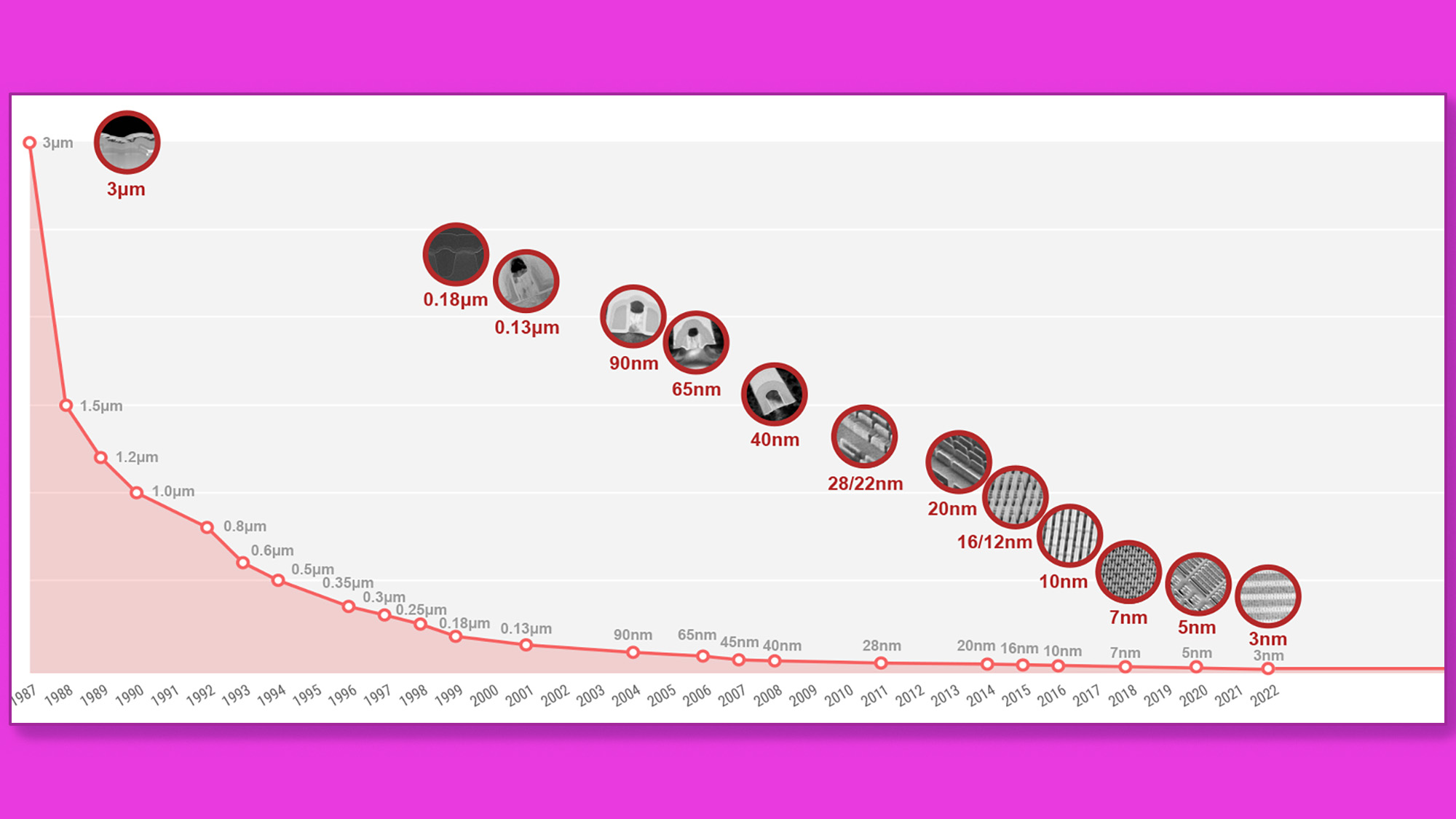
While I didn't get too much time with DLSS 4 during my time with the RTX 5090 (though our Managing Editor, Matt Hanson did in his fantastic 8K deep dive), I do want to comment on the whole "fake frames" debate.
There are a lot of people who aren't keen on AI stuff, and I definitely get that, but in my opinion, upscaling is one of the few unambiguously good use cases for the tech, and frame generation is certainly part of that innovation.
No, the GPU isn't fully rendering the entire frame from scratch starting with regenerating the object geometry, applying textures, applying lighting, and the like. If that's the road you feel graphics processing should go down for the forseeable future, then you're honestly going to be out of luck.
The end of Moore's Law is a thing. It's real, and there's only so much improvement we're going to be able to gain by making ever smaller transistors. It's just physics at this point, and at 4nm, those transistors are about as small as physics will allow them to be while still being reliable for several years. TSMC already has 3nm nodes in volume production and the next-gen 2nm TSMC nodes are in the works, yes.
But if you look at the graph above (courtesy of TSMC), you can see that transistor miniaturization seemed to be exponential prior to 1990s, but it quickly turned into a negative-logarithmic curve in the past three decades. What that means is that for every iteration, we're getting diminishing returns for the same amount of effort put into the process.
That curve up above, ultimately, is why you need Nvidia DLSS, AMD FSR, Intel XeSS, and the like. You can't hardware your way to the massive jumps in gen-on-gen framerates that we've seen in the past if you want to still have a graphics card that can fit in your case and not, say, a 200lb server cluster.
Ultimately, we're going to have to find a different way of making progress happen, and it's forcing us to rethink how we process graphics. Using AI to predict what the next frame in a game will look like based on all the data the GPU has seen over the last dozen or so frames is the right way to do it, in the end, and it might be the only way to do it going forward.
OK, so that was a lot, and I really didn't mean to drop any math on y'all, but it is what it is. That said, hopefully it'll help illustrate why upscaling is really the only way we're going to get faster graphics at ever higher resolutions in the future.
Rather than invest resources trying to squeeze the last bit of performance out of the size of a transitor, we're going to need to desegment the GPU hardware into specialized functions, like Tensor cores, that can perform more specialized functions and free up the main processing components to act more like managers of a graphics factory rather than producing artisanal frames on its own.
They'll be different, sure, but it doesn't necessarily mean they're wrong in the end. Do those frames look as good right now? No, they don't, though most people will never really be able to tell the difference while gaming.
Likewise, this process introduces other problems, like input latency, that will need to be addressed though tools like Nvidia Reflex, but these are ultimately solvable problems. What's not solvable is getting native 8K path-traced rendered frames from a GPU using the design paradigms we've relied on in the past.
Just like PC games had to stop being rendered on the main CPU and move to a dedicated GPU, we're likely to see further division of processing labor and new processing techniques like DLSS 4 Multi-Frame Generation in the years ahead. These tools, like GPUs themselves, will get better with time, and eventually we'll be asking how we ever games without them at all.
OK folks, I'm turning in for the weekend, but we'll catch up with you next week as we get ready for the launch of the RTX 5090. Stay warm out there!
And we're back, folks. Hope you had a good weekend!
Christian Guyton, UK Computing Editor, here - we're now just three days away from that sweet, sweet RTX 5090 launch date, so start getting your F5-ing fingers warmed up, because stock of the world's new most powerful consumer GPU is almost certainly going to vanish like an ice cube in Death Valley.
Our advice hasn't changed: make sure you're signed up to stock alert notifications at retailer storefronts and Nvidia's own website, and act fast once the card goes on sale on January 30.
Shoppers should be prepared to make some compromises when it comes to picking up one of these GPUs at launch - by this, I mean that you shouldn't set you sights specifically on one exact model of the RTX 5090.
Founders Edition cards from Nvidia will almost certainly sell out first, with third-party models from manufacturers like Asus, MSI, and Gigabyte potentially standing as a better option for those who want to grab an RTX 5090 on launch day. However, that'll be dependent on individual manufacturer stock; there's no way of knowing exactly how prepared each of Nvidia's GPU partners will be when it comes to producing enough units.

Good morning! We are now just two days away from the Nvidia RTX 5090 going on sale (on January 30), and I'm not going to lie... I'm worried about stock.
We've heard a fair few rumors that there's not going to be a massive amount of RTX 5090s on sale, and while that's not particularly shocking, as the 5090 is a bit of a niche product due to its power and price, it does mean if you're planning on buying one, you might need to be quick - and this guide should help. The whole computing team at TechRadar will be keeping an eye on stock levels for both the UK and US, and hopefully also Canada and Australia, to help point you in the right direction when the cards go on sale.

More worrying stock-related news from MSI, which suggests RTX 5090 GPUs will be short supply on Thursday due to an issue between Nvidia and third-party GPU makers like MSI....
While this is just rumor at the moment, it does suggest that the Founders Edition (made by Nvidia itself) could be the best bet to getting hold of one. We'll be keeping an eye on this...

Well, I did not see this coming! I've just found out that in the UK, mobile phone network EE will be selling the Nvidia RTX 5090, as well as the RTX 5080. From what I can see, it looks like the 5080 will be sold on January 30 on a first-come-first-serve basis from £1,245.99.
Meanwhile, the RTX 5090 will be sold 'in the coming weeks'. EE isn't the first retailer I think of when looking to buy a new GPU, but more options are always welcome. As soon as I hear more about the RTX 5090 situation, I'll update you, but it might still be worth keeping an eye on EE's website on January 30.
Earlier today, Nvidia gave an update on expected stock availability when the new RTX 5090 releases and it's likely a sign that Nvidia expects these cards to sell out extremely fast.
"We expect significant demand for the GeForce RTX 5090 and 5080 and believe stock-outs may happen," an Nvidia spokesperson posted to an official Nvidia forum this morning. "NVIDIA & our partners are shipping more stock to retail every day to help get GPUs into the hands of gamers."
So, while it's definitely good that Nvidia is keeping on top of things and will hopefully get enough stock to retailers that the new RTX 5090 doesn't sell out immediately online, you can definitely expect a rush on Nvidia's new flagship cards once they go on sale on Thursday.
Just one day to go, folks... we're so close. I can practically hear the scalpers preparing to count their ill-gotten riches.
But let's not doomsay - just because scalpers and scammers will be out in force this week, it doesn't mean you won't be able to pick up an RTX 5090. While there aren't any real pre-orders available right now, make sure you're signed up to any stock notifications (some retailers, such as B&H Photo, are only selling RTX 5090 cards through their stock alert systems). Most storefronts are limited purchases to one per person, though why you'd want two 5090s, I have no idea.
Sorry to bring more doom and gloom, but it looks like stock issues really are going to be quite bad... so bad, in fact, that MSI has admitted that it won't even be shipping its RTX 5090 cards until February 6, with only pre-orders available on MSI's website tomorrow. With Nvidia itself warning about limited stock levels, things are looking a bit dicey - it's no wonder some shoppers are already camped out in line at physical stores.
The question of 'should I upgrade my GPU?' is always a thorny one. I've already seen plenty of RTX 4090 and 4080 Super owners decrying the new cards as 'not worth it', and they're right... but they're also not the target audience for these GPUs.
Sure, Nvidia loves the whales who are poised to drop a cool two thousand on a new GPU despite already owning a high-end RTX 4000 card, but the people who should really be looking at the RTX 5000 lineup are those still rocking 3000, 2000, or even older GPUs. If you've been relying on a trusty RTX 2080 Ti for the past half-decade, now might be the time to bite the bullet and upgrade - even more so if you're still trying to play the latest games on a GTX (or even a GT) card.
For anyone curious about the performance of the RTX 5090's little sibling (well, the middle child of the Blackwell family, I suppose), our Nvidia RTX 5080 review is now live.
Spoiler alert: it performed a lot better than the previous-gen RTX 4080, which was widely panned at launch. Considering the literal thousand bucks of price different between the 5080 and 5090, it feels like Nvidia's new 'almost-flagship' GPU had a bit of an easier time this generation - my colleague John Loeffler describes it as "easily the best graphics card in the mainstream consumer GPU segment" and notes that despite the modest generational performance gains, it's still a strong choice of graphics card.
Of course, it won't touch the RTX 5090 in terms of performance, and that's what you're here for...
Some shoppers are probably wondering about the pros and cons of buying a third-party RTX 5090 over Nvidia's Founders Edition (FE) version. Here's the answer: there's not a huge amount of difference, really.
Sure, factory-overclocked third-party cards might net you a small amount of boosted performance, but at the end of the day it's clear that Nvidia is going all in on AI-powered performance boosters such as DLSS 4 and Multi Frame Generation, and every RTX 5090 has the same number of Tensor cores, so you're not going to see any real difference on that front. The big advantage of the RTX 5090 FE is that it's shockingly compact for a flagship Nvidia GPU, meaning that you can put it in some relatively small form factor builds while most third-party cards are rather chunky in comparison - but that's honestly the only significant factor here.
Shoppers in the UK should be keeping a close eye on Scan: the company is partnering up with Nvidia to run an in-store launch event geared towards putting these GPUs in the hands of gamers (rather than scalpers). You can sign up on Scan's website - apparently, there will also be some bonus goodies for shoppers who attend in person.
Hey folks, John here taking over for a few hours as we get into the last 24 hours before the RTX 5090 launches.
I'm downright exhausted after plowing through both my RTX 5090 and RTX 5080 reviews, the latter of which posted just a few hours ago, so definitely check it out if you're debating whether to get an RTX 5090 or an RTX 5080.
While we're here to talk about graphics cards, I do find it remarkable how Deepseek has wiped close to $600B off Nvidia's market cap in like a week. I am the last person to take advice from about financial markets, but if DeepSeek can get the same performance as Meta's and OpenAI's LLM for something like 11x less power consumption, I am all for it.
It's launch day, everybody! Christian Guyton, UK Computing Editor here - I'll be here throughout today, tracking stock and giving you updates to (hopefully!) help you track down one of these prized GPUs.
Well, the GPU isn't even on sale yet, and it looks like Micro Center's RTX 5000 landing page has already gone down... it's returning a 403 Forbidden error page at the time of writing. It's possible that it's been taken down intentionally to prep the page in advance of the launch, or maybe their servers are just taking an unintentional DDOS pummelling right now.
I've crawled through numerous retailer sites already this morning, but no surprises here: nowhere has the RTX 5090 on sale just yet, with the expected launch time being 9AM ET / 6AM PST / 2PM GMT. However, if any retailers slip through the net and drop their stock early, we'll be here to let you know.
Assuming you're visiting this site from the comfort of your bed or couch and not camped out in front of a store somewhere, you're going to want your F5-ing finger at the ready once stock drops. Retailer sites will likely sell out fast - especially if rumors about low stock across multiple storefronts are accurate - but it's also possible that they'll experience some site stability issues as shoppers flock to their pages, so if a website looks like it's bugging out, don't close the tab and write it off immediately! It's not over until the 'out of stock' messages start popping up...
As was the case back in 2022 with the RTX 4090 launch, it's possible (likely, even) that the actual best way to snap up an RTX 5090 today will be via a pre-built system rather than trying to buy the GPU on its own.
PC-building partners will have received a decent chunk of RTX 5000 stock that's been specifically earmarked for pre-built PCs and won't be sold separately. Since most shoppers will be looking to upgrade the GPU in their existing rig, these pre-built systems might not sell out quite as quickly - though bear in mind that some companies make them to order, so you may end up having to wait a bit longer to receive it.
Now, given the sky-high price of the RTX 5090, any pre-built PC containing this GPU is going to be... not cheap, to say the least. In order to avoid immediate system bottlenecking, you'll need a robust spec list: this 3XS Vengeance RTX model from Scan in the UK gives you a good idea of what to aim for if you're contemplating picking up a pre-built machine.
I'd consider swapping out that AMD Ryzen 7 9800X3D for a Ryzen 9 9900X3D or 9950X3D, but it's certainly not a bad choice - especially if you're planning to use your PC mainly for gaming. 32GB of RAM is recommended for an RTX 5090 system, and you'll want to be confident that whatever PC you buy has sufficient cooling, as the 5090 can pretty comfortably double as a space heater in a case without good airflow.
Rather hilariously, Overclockers in the UK already has all its upcoming RTX 5090 models fully listed on its website - but they're all down as costing £25,000 apiece. I'm very much hoping that this is a nifty way to put them on sale at exactly 2PM GMT by merely tweaking the prices, and not a horrible portent of what GPU pricing is about to look like.
I mean, let me be honest for a second here: it's probably going to get pretty bad. I'm not even talking about the current tariff nonsense going on in the US - the state of the GPU market has been hell for the average consumer for years now. Years ago, I remember walking into a store less than a week after the launch of Nvidia's GTX 1080 and buying a pre-built system containing that very graphics card. I got a good deal on it, too.
Nowadays? Well, even if you are able to track down stock, prices are frequently inflated and it doesn't even seem to get much better after launch. It's still near-impossible to pick up an RTX 4090 for its MSRP, with units selling on sites like Newegg for double its original launch price - for a two-and-a-half-year-old GPU. That's crazy - and unfortunately, it's probably going to happen this time around too.
We all know what happened: the crypto craze, global chip shortages, and general economic downturn (along with the more recent proliferation of generative AI) created a perfect storm that badly impacted regular PC gamers trying to pick up new GPUs.
We're still feeling the effects today, and with Nvidia increasingly focused on enterprise AI use cases for its hardware - and the ever-delicate state of chipmaker TSMC hanging in the balance over tensions between Taiwan and mainland China - it's beginning to feel like high-end graphics cards just aren't meant for the average consumer anymore.
Although really, at $1,999 / £1,939 / AU$4,039, can we even say that the RTX 5090 is a card for ordinary consumers at all? The pricing of the 4090 made many balk at the time; this generational price jump has taken us squarely into the territory of enthusiasts and professionals, and there are valid arguments to be made that the average person literally doesn't need this much graphical power to play games at a high level.
The thing is, gamers are a historically fickle and prideful bunch (yes, I'm including myself here, don't come after me on social media for saying that) and regardless of whether we really need it, there's always going to be a degree of FOMO when a new flagship GPU drops. Having an RTX 5090 is about to become a status symbol among PC gamers - and Nvidia knows this, which is probably why Team Green hasn't yet shifted over to being a full-time AI company.
I'm still dutifully checking retailer sites, though unsurprisingly there's no sign of any stock dropping yet. Most retailers are sticking to the usual 'high demand, one per customer' rulebook. However, some storefronts have some non-standard rules in place.
In the US, shoppers at Best Buy must have an account, as the retailer is using a 10-minute 'reservation' process - not a pre-order, but it will potentially give you breathing room to confirm your details and complete the purchase. Meanwhile, B&H Photo currently appears to be only offering stock to users who have completed a Stock Alert sign-up process, with some third-party models not even going on sale today but rather going on pre-order for when stock arrives (presumably at a later, but not too much later, date).
Over in the UK, most retailers are sticking to the 'one per customer' rule too. Some storefronts - including Scan, Overclockers, and Box - have stock notification sign-ups available, and I'd strongly recommend that you sign up to literally all of them.
Notably, some retailers are specifically blocking sales to shoppers outside the UK, so while UK stock is likely to hold out better than it will in the US (if previous launches are anything to go by), that doesn't mean US shoppers will easily be able to get their hands on an RTX 5090 by a simple overseas order. Of course, there's nothing to stop you from importing one that's already been purchased - if you're in the US and you know someone living in the UK, it might be worth putting them on speed dial today...
Uh oh, folks... the RTX 5090 stock situation really isn't looking good. New claims from popular YouTuber and leaker Moore's Law Is Dead (MLID) say that launch day stock is ‘basically non-existent’ at some US retailers, with at least one (unnamed) store stating that they have zero RTX 5000 cards in stock as of last night. It sounds chaotic - Wccftech noted that one Japanese retailer is holding a lottery to decide who gets a GPU today, something we've seen before.
Notably, some of MLID's sources apparently claimed that stock of the RTX 5080 is looking a little more hopeful, but still lower than RTX 4080 stock was back during the RTX 4000 launch. Another source said that their employer had banned employee purchases of RTX 5000 cards, a very rare occurrence.
Of course, this is all just pure rumor right now based on MLID's sources, but he'd been pretty accurate in the past, so it's likely stock won't last long at all - at least in the US.
Given that the RTX 5080 might be the easier card to pick up once stock drops today (and honestly? Unless you're training an AI, the 5080 is more than enough for gaming) you might want to consider checking out our Where to Buy the RTX 5080 page, where my lovely editor Matt Hanson is currently going through the same retailer-refreshing fugue state as I am right here.
Quick update - I'm going to add CCL to the list of US retailers up top on this page, as they're also expected to have stock today - another site for you to sign up to. Best of luck, people!
Two hours to go, everyone... I'm sweating. Is anyone else sweating?
It's unlikely that any retailer will make stock available before the expected 9AM ET / 6AM PST / 2PM GMT launch time, but it's always possible - even if one storefront jumps the gun by a minute or two, being on the site and prepared to refresh could be the difference between getting an RTX 5090 today or not.
In any case, if you're aiming to grab a new Nvidia card, you're going to want to hit all those retailer links at the top of this page and keep them refreshing as we get close to the launch time. If you haven't already signed up for stock notifications with retailers, be sure to do that - some stores, like B&H Photo, are only selling RTX 5000 cards to shoppers who have signed up for stock alerts.
Fair warning: even if you do manage to pick up an RTX 5090 today, odds are it won't be at retail price. Despite its MSRP of $1,999 / £1,939 / AU$4,039, it's highly likely that cards will be selling comfortably above that - especially factory-overclocked third-party models where the manufacturer can set its own MSRP.
As I mentioned further down, MLID on YouTube reported yesterday on stock scarcity in the US - also discussed in that same video was pricing, with one of MLID's sources claiming that their store would be selling RTX 5090 GPUs in the $2,300 to $2,600 range - and that's at retail. I hate to even imagine the sort of prices we're going to see scalpers trying to sell these cards for in the coming weeks...



